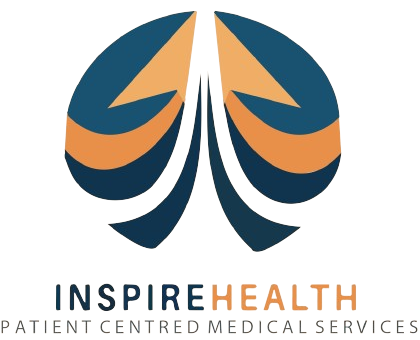PRIVATE AGE-RELATED MACULAR DEGENERATION TREATMENT
Our Services
PRIVATE AGE-RELATED MACULAR DEGENERATION TREATMENT
Age-related macular degeneration (AMD) is the commonest cause of blind registration in developed countries including UK. It is a disease which effects the central area of the back of eye which is called macula. It causes loss of central vision while your peripheral vision is unaffected. You are not able to see fine details, whether you are looking at something close or far.
WHAT IS DRY AMD?
Dry AMD is the commonest type of AMD. About 80% (8 out of 10) of people who have AMD have the dry form. In this type one loses vision slowly, till recently there was no specific treatment available apart from advice regarding dietary supplements and lifestyle adjustments.
The Valeda Light Delivery System (LDS) is the only US Food and Drug Administration (FDA) approved treatment available for early dry AMD. This treatment was approved by FDA in November 2024. It is a safe, non-invasive, and painless therapy, which has been clinically proved to be effective in the treatment of eligible patients of early dry AMD. LIGHTSITE III study showed that more than 58% of patients of dry AMD treated with Valeda Light Delivery System gained 5 or more letters, 19% of patients gained 10 or more letters and 5.5% of patients 15 or more letters of vision.
WHAT IS WET AMD?
This type of AMD is less common but much more serious. In this type, abnormal blood vessels grow under the retina which may leak and bleed causing scarring of the macula. You lose vision faster with wet AMD than with dry AMD.
Wet AMD can be treated with anti-VEGF (anti vascular endothelial growth factors) drug injections which are injected into the eye. to achieve the best results, it is critical that the treatment for wet AMD is started as soon as possible. If there is delay in the treatment of wet AMD, then it can lead to untreatable macular scar and permanent loss of central vision. In the NHS treatment of wet ARMD is not available until the vision goes down to 6/12 in the affected eye. At Inspire Health we offer treatment of wet AMD when the vision is better than 6/12 and this has been shown to be the best practice. More patients where treatment of wet AMD starts before their vision deteriorates to 6/12 maintain better than 6/12 vision i.e. maintain driving vision.
HOW DOES VALEDA LIGHT THERAPY FOR DRY AMD WORK?
Valeda Light Therapy works by a process called Photo biomodulation. Photo biomodulation is a process in which specific light wavelengths are used to improve the function of photoreceptor cells in the retina. Different wavelengths of LED light are used to target cells and stimulate their activity to slow down the degenerative process.
A typical treatment cycle consists of nine light treatment sessions with Valeda Light Delivery System over three-to-four-week period. Treatment cycles ideally need to be repeated three times a year to maintain the effect.
WHO IS SUITABLE FOR VALEDA LIGHT THERAPY?
Patients with dry AMD having mild to moderate visual loss due to dry age-related macular degeneration and those at a high risk of developing geographic atrophy may be suitable for the Valeda Light Therapy if they meet certain treatment eligibility criteria.
Every patient will need detailed tests with all the latest retinal scanning technology and a consultation to confirm you may benefit from treatment. If you are eligible and after a detailed discussion about your diagnosis, a personalised treatment plan will be devised before the treatment is initiated.
HOW IS VALEDA LIGHT THERAPY ADMINISTERED?
This treatment is administered in a clinical setting using a specialised light delivery system called Valeda. Patients usually undergo three blocks of treatment each year. Each treatment block aims to slow down the progression of dry AMD.
On the day of the treatment:
- If you wear glasses or contact lenses, you will need to remove them before the Valeda treatment.
- No dilation of the eyes is required for the Valeda treatment.
- The treatment typically taking less than 5 minutes in each eye. You will be comfortably seated in front of the Valeda Light Delivery System for the procedure.
- Following treatment you may have an after image lasting couple of but it completely settles quickly in almost all.
- You can readily engage in regular activities without any hindrance following treatment.
THE RESULTS OF VALEDA & POTENTIAL SIDE EFFECTS
Results
Treatment with Valeda improves overall visual function, including improvement in vision when scored on the eyechart and improved detailed vision. Photographic imaging also shows improvement in scans of the eye when assessed for drusen (protein deposits that are observed in the diseased eye).
LIGHTSITE III study showed that more than 58% of patients of dry AMD treated with Valeda Light Delivery System gained 5 or more letters, 19% of patients gained 10 or more letters and 5.5% of patients 15 or more letters of vision.
Side Effects
Photo biomodulation (PBM) is a low-level light-based therapy that helps cells improve their function. PBM has been used in many different diseases and disorders for decades with a positive safety profile. In clinical trials in Dry AMD patients, the use of light therapy has also been shown to be safe. Valeda is designed to be eye safe. There have been no treatment related side effects noted in previous studies with the Valeda treatment.
